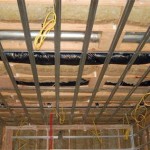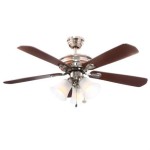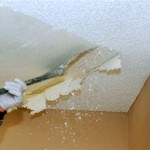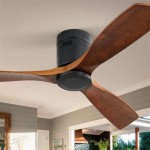How To Get Rid Of Ceiling Stains
Ceiling stains detract from a room's aesthetic appeal and can indicate underlying issues such as leaks or excessive moisture. Addressing these stains often involves more than just covering them up; it requires identifying the source and implementing appropriate cleaning methods.
Before attempting any cleaning process, it's crucial to identify the type of stain. Different stains require different treatment approaches. Common ceiling stain culprits include water damage, nicotine, smoke, grease, and mold or mildew.
Water stains often appear yellowish-brown and indicate a leak from the roof or plumbing above. Nicotine stains, resulting from cigarette smoke, tend to be yellow or brownish and can cling stubbornly to ceilings. Smoke stains, from fireplaces or other sources, can appear grayish-black. Grease stains are common in kitchens and can vary in color from yellowish to brown. Mold and mildew stains appear as dark, often black or greenish spots and thrive in humid environments.
Safety should be the primary concern when dealing with ceiling stains. Always wear protective gear such as gloves, goggles, and a dust mask, especially when dealing with potential mold or mildew. Ensure adequate ventilation in the room by opening windows and doors. If working with cleaning solutions containing bleach, be particularly cautious to avoid skin contact and inhalation.
Once the stain type is identified and safety precautions are in place, the cleaning process can begin. For water stains, addressing the leak source is paramount. Once the leak is repaired and the area is dry, a solution of one part bleach to three parts water can be applied with a sponge or spray bottle. Allow the solution to sit for 10-15 minutes before rinsing with clean water.
Nicotine stains can be particularly challenging to remove. A strong cleaning solution, such as trisodium phosphate (TSP), can be effective. Follow the manufacturer's instructions for mixing and application. A nicotine stain remover specifically designed for ceilings can also be used. Test any cleaning solution on an inconspicuous area first to ensure it doesn't damage the ceiling paint.
Smoke stains may require repainting, especially if they are heavily ingrained. Before repainting, clean the area thoroughly with a degreaser to remove soot and residue. A stain-blocking primer should be applied before the final coat of paint to prevent the stain from bleeding through.
Grease stains in the kitchen can often be tackled with a mixture of dish soap and warm water. Apply the solution to the stain with a sponge and gently scrub. Rinse with clean water. For stubborn grease stains, a degreaser may be necessary.
Mold and mildew stains require special attention due to potential health risks. A solution of one part bleach to three parts water can be effective in killing mold and mildew. Apply the solution to the affected area and allow it to dwell for 15-20 minutes. Rinse thoroughly with clean water. Ensure the area is well-ventilated to prevent further mold growth. A dedicated mold and mildew remover can also be used following the manufacturer's instructions.
For all stain types, it's recommended to test the cleaning solution on a small, inconspicuous area of the ceiling first. This helps determine if the solution will damage the paint or ceiling material. If the test area shows discoloration or damage, a milder solution or a different approach may be necessary.
When applying cleaning solutions, work in small sections to avoid streaks. Start from the outer edges of the stain and work inwards. Overlap each stroke slightly to ensure complete coverage. Rinse thoroughly with clean water after cleaning to remove any residue.
Proper ventilation is crucial throughout the cleaning process. Open windows and doors to allow fresh air to circulate. This helps dissipate fumes from cleaning solutions and accelerates the drying process. A fan can also be used to improve ventilation.
If DIY methods fail to remove the stain, or if the stain is extensive or recurring, consider contacting a professional cleaning service or a contractor specializing in water damage restoration or mold remediation. Professionals have the expertise and equipment to tackle complex stain removal and address underlying issues contributing to the stains. They can also assess the extent of the damage and recommend appropriate solutions.
Regular cleaning and maintenance can help prevent future ceiling stains. Dust ceilings periodically with a soft-bristled brush or vacuum cleaner attachment. Address leaks promptly to avoid water damage. Ensure adequate ventilation in areas prone to moisture buildup, such as bathrooms and kitchens.
How To Quickly Easily Remove Water Stains On Your Ceiling Without Painting Melanie Lissack Interiors

How To Remove Water Stains On Your Office Ceiling Permanently A Star Decorators

How To Remove Water Stains On Ceilings

Super Easy Way To Remove Water Stains From Ceilings Without Paint 1 Step Abbotts At Home

How To Remove Water Stains From A Drywall Ceiling

Popcorn Ceiling How To Remove An Ugly Stain Drywall Repairman Water Damage Repair

How To Remove Water Stains On Walls Ceilings Priority One Coatings

4 Causes Of Water Stains On Your Ceiling Ways To Respond

How To Remove Water Stains On Ceiling And Walls Diy Vlog 9

How To Get Rid Of Brown Water Stains On Ceiling Site








